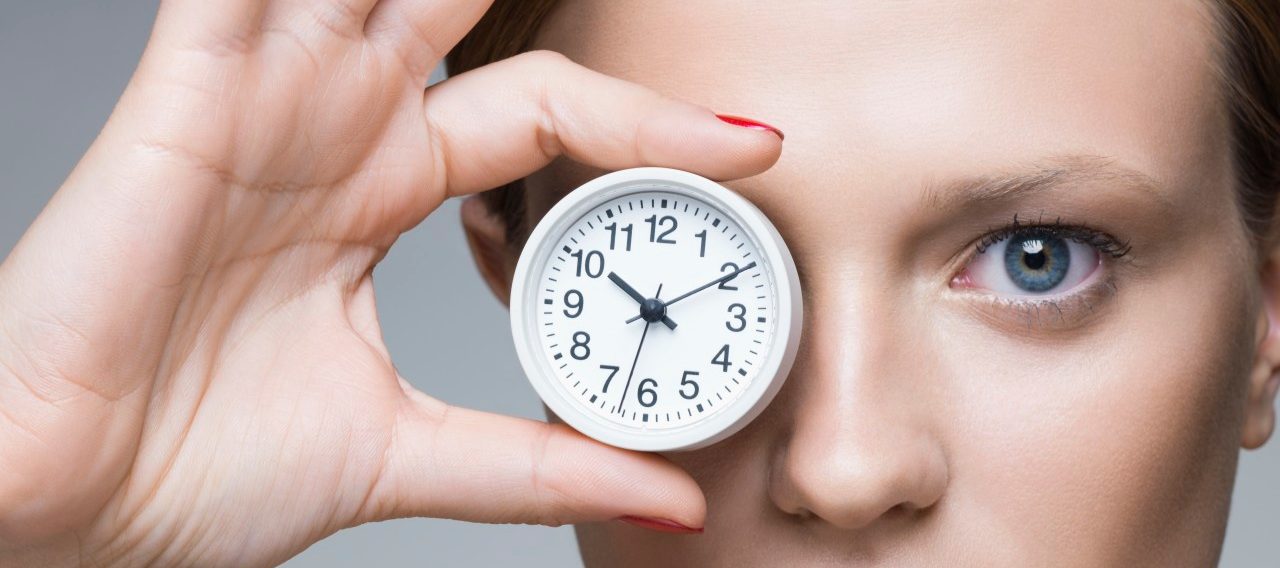How Your Sleep Cycle Works

There’s more going on when you snooze than you may realize. Here’s how your sleep cycle works and why a normal sleep cycle is important for feeling your best.
Until about 70 years ago, doctors and scientists thought sleeping was mostly a period when your brain, along with the rest of your body, “shut down” to passively rest and recover from what you did during the day. But in recent decades, helped by studies incorporating technology to track brain activity, researchers discovered there’s much more to sleep than resting.
Your sleep cycle involves several distinct patterns of activity affecting everything from your muscles, breathing, and heart rate to brain activity. And how your sleep cycle works — whether it is disrupted or not — plays an important role in your health and how energetic you feel in the mornings.
YOU MIGHT ALSO LIKE: Why Is Sleep Important?
How your sleep cycle works through the night
Your sleep cycle includes two different types of sleep, rapid eye movement (REM) sleep and non-REM sleep. Each is linked to specific brain waves and neuron (brain cell) activity.
You move through all stages of non-REM and REM sleep several times during a normal night’s sleep. Both non-REM and REM sleep are believed to be important so your brain can consolidate memory about what you learned and experienced during the day, the National Institute of Neurological Disorders and Stroke (NINDS) explains.
Stages of non-REM sleep
- Stage 1 non-REM sleep marks a short period of relatively light sleep as you move from wakefulness to slumber at night. It’s also the stage of sleep people experience when they indulge in very brief “catnaps,” the National Sleep Foundation points out. Breathing and eye movements slow and your muscles relax, except for occasional twitches. Compared to wakefulness patterns during the day, brain wave patterns begin to slow down.
- Stage 2 non-REM sleep is marked by more slowing down of breathing and heartbeats as you enter a deeper sleep cycle. Muscles relax further, eye movements stop activity, and your body temperature drops a bit. Brain wave activity slows down further, except for brief bursts of electrical activity, the NINDS notes. As your sleep cycle repeats stages during the night, you spend more time in stage 2 non-REM sleep than in other sleep stages.
- Stage 3 non-REM sleep is the deepest sleep period of all. It occurs in longer periods during the first half of your night’s slumber. Your pulse and breathing slow to their lowest levels, and brain waves slow more. Muscles are in their most relaxed state, and it may be difficult to wake you up. Experiencing this stage of sleep long enough and without disruption is key to feeling refreshed and rested in the morning.
As you move in and out of the non-REM sleep cycles, you also experience periods of REM sleep. This is when most of your dreaming takes place, although you may dream some during non-REM sleep.
The REM phase first begins about 90 minutes after you fall asleep. Then, toward morning, longer and deeper REM periods of sleep typically occur.
Your eyes move rapidly from side to side, and studies show brain wave activity during REM sleep becomes closer to that seen in wakefulness. Breathing speeds up and may be irregular as your pulse quickens and blood pressure increases to almost the same level as when you are awake. As you age, you spend less of time in REM sleep, according to the NINDS.
When your sleep-wake cycle is out of whack
How your sleep cycle works is connected to your sleep-wake cycle — the daily pattern involving when you go to sleep and when you wake up most days. On average, the ideal sleep-wake cycle for adults is seven to nine hours of sleep (almost always at night), followed by 15 to 17 hours of being awake.
Hormones and neurochemical processes in your body rise and fall over the course of 24 hours, causing you to feel sleepy or awake and alert. For example, the chemical adenosine builds up in your body during the day and, when high enough, causes sleepiness, the National Sleep Foundation points out. If you drink too much coffee or other caffeinated beverages late in the day, the caffeine blocks adenosine receptors and can keep you awake.
The hormone melatonin is also key to regulating your sleep-wake cycle. It normally rises late in the day and during the night, resulting in the need to sleep, then plummets early in the morning so you wake up. But if you are exposed to bright lights, or even keep a light or computer screen on at night in your bedroom, you can disrupt melatonin production — making it hard to fall sleep or to sleep soundly.
If you cut down on caffeine late in the day, keep your bedroom quiet and dark, and go to bed at a reasonable hour and you still wake up regularly feeling tired, it’s a good idea to talk to your doctor.
Things you may not be aware of may be disrupting how your sleep cycle works — including sleep apnea (a disorder in which breathing is briefly and repeatedly interrupted during sleep), restless legs syndrome, a frequent need to urinate, and other potentially treatable problems.
Bottom line: Insufficient or poor-quality sleep is nothing to ignore. Over time, it can seriously harm your health. In fact, the Centers for Disease Control and Prevention notes lack of sleep is linked to the risk of cardiovascular disease, type 2 diabetes, obesity, and depression.
Updated:
July 09, 2019
Reviewed By:
Janet O’Dell, RN